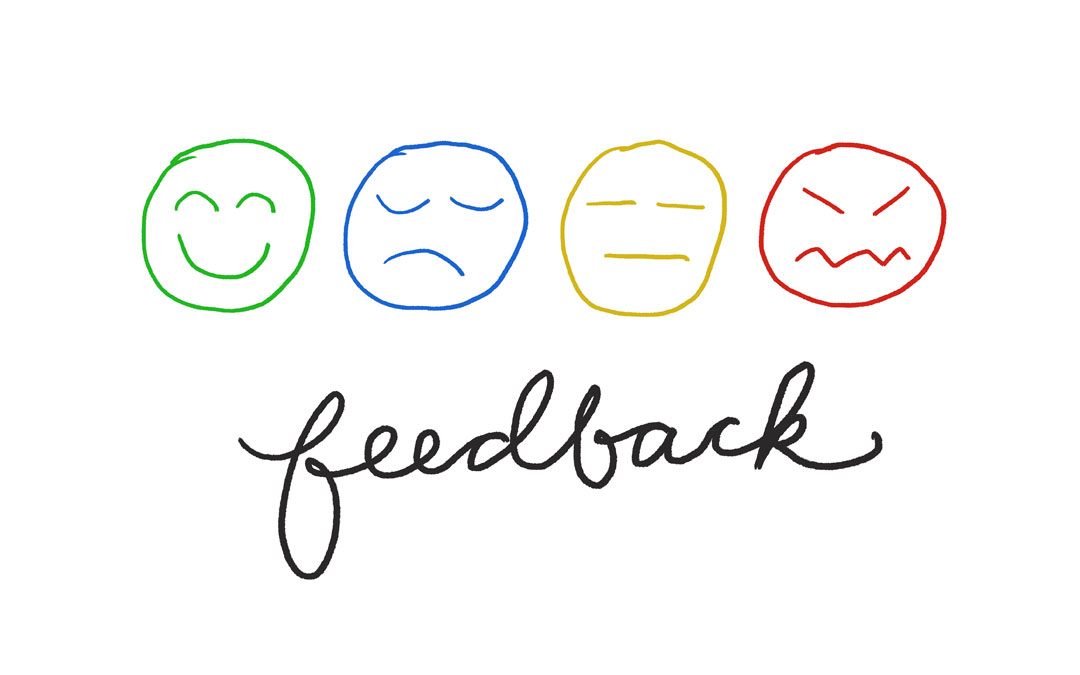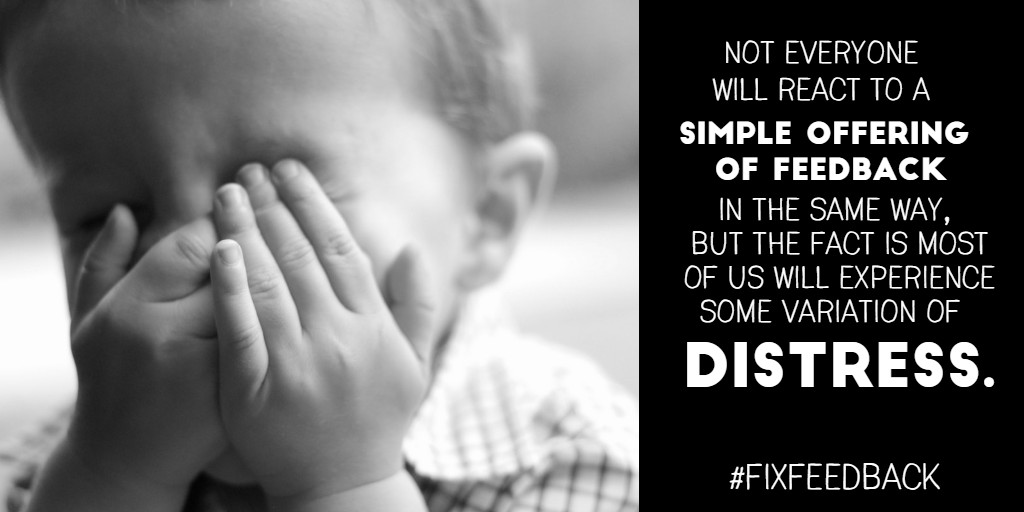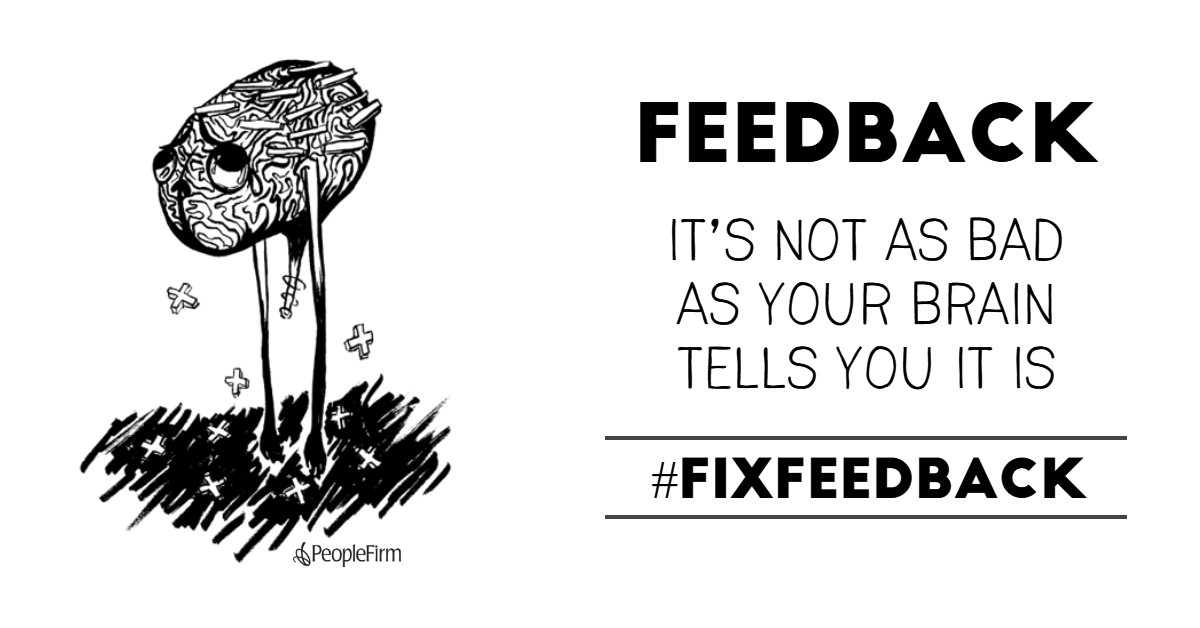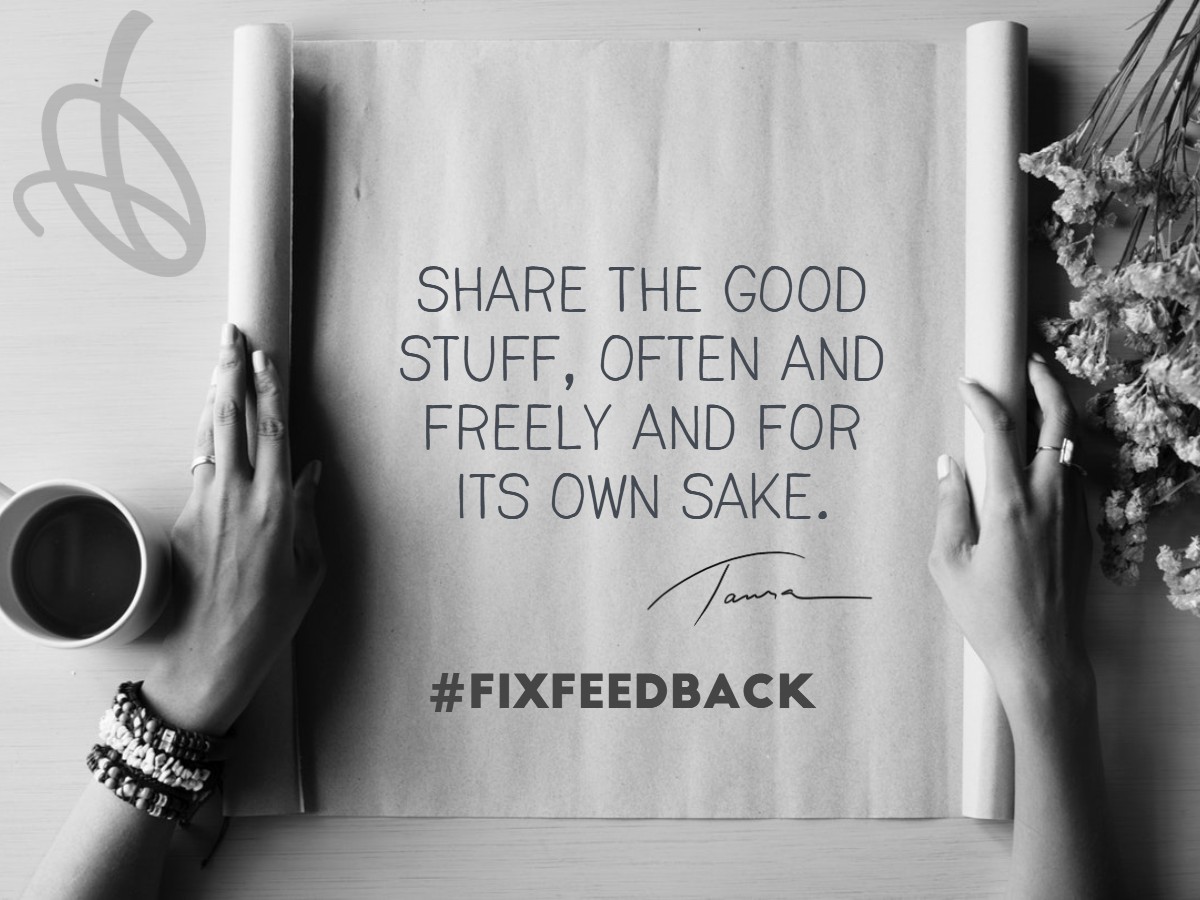Effective Feedback
It was a Thursday morning and I was just rolling into the office. I was hurrying to the coffee machine for a dose of badly-needed caffeine when I heard a voice from behind me.
“Skip, can we grab five minutes to talk about my email?”
I took a deep breath because this individual knows me well enough to know:
a) I need my coffee before you ask me to think.
b) I resist and almost resent “five minute” requests since that almost never happens.
Kidding aside, I said what I realize many don’t like to hear from the boss. “Sure, I will give you some feedback.” Fortunately, this person has a great relationship with me so she didn’t react with a look of horror.
Feedback: the mere mention of the word can make our blood pressure rise and our defenses go up. For many of us, it’s a dirty word that we associate with bias, politics, resentment, and self-doubt. In their book, Feedback (and Other Dirty Words): Why We Fear It, How to Fix It, Tamra Chandler and Laura Grealish argue that feedback, when done right, has been proven to be the most effective means of improving communication and performance for you and your organization.
I recently interviewed Tamra and Laura to learn about how feedback got such a bad rap, what we can do to redeem the practice of feedback for good, and the potential upside for leaders and organizations who do so.
Why Feedback Matters
Why should we care about fixing feedback in the first place?
How we experience feedback today gets in the way of people showing up and doing their best work. That’s a problem worth fixing! During the past several years, we’ve found that nearly every organization we engage with is trying to crack the code to better feedback. Leaders and employees alike have got feedback wrong – both the way we think about it and the way we practice it. The good news is that this problem can be fixed.
Benefits of Feedback
What does the research tell us about feedback in business?
- Boost Performance: A study of more than 19,000 employees conducted by the Corporate Executive Board indicates the strongest lever of increased performance is the fairness and accuracy of a manager’s descriptive feedback, i.e., observing direct reports and sharing specific examples of what they saw without evaluating it. This kind of non-judgmental feedback was shown to inspire a whopping 39% boost in performance.
- Drive measurable improvement: A 2018 Institute for Corporate Performance (i4cp) and the Center for Effective Organizations (CEO) joint study called “Performance Feedback Culture Drives Business Impact” found that organizations ranked in the top third for creating a feedback culture outperformed the bottom third by a two-to-one margin in financial factors like net profit margin, return on investment, return on assets, and return on equity.
- Increase Leader Impact: Leaders who ranked in the bottom 10 percent for giving honest feedback had teams that ranked 25 percent lower in engagement than their peers. Conversely, leaders in the top 10 percent for giving honest feedback had teams in the top quartile for engagement.[i] Further, a study of more than 50,000 leaders found those who ranked in the top 10 percent for asking for feedback were in the 86th percentile for overall leadership effectiveness. Sadly, those wallowing in the bottom 10 percent for asking also ranked near the bottom for effectiveness at the 15th percentile. [ii]
- The Paradox: Surprisingly, the most common complaint about feedback is, “I don’t get enough.” This tells us that, despite feedback’s damaged brand, most of us still crave it and intuitively know that it’s a good thing— when it’s done right. A 2018 Office Vibe “Global State of Employee Engagement” study found that 62 percent of employees want more feedback from their colleagues, and 83 percent said they appreciate feedback, both positive and negative. Here’s the paradox: despite the mess we’ve made of feedback, most of us want more, yet few of us make a habit of actively seeking or extending it. Feedback begets feedback, but somebody needs to help get this ball rolling.
Why does feedback create such a reaction?
Most of us tend to physically respond (and not in a positive way) when we hear the words, Can I give you some feedback? This reaction is very human and driven by factors that have been with us a long time. Most of us have been conditioned, through bad experiences that start in our youth and continue throughout our lives, to expect feedback to hurt. This conditioning creates connections in our brains that trigger our “fight or flight” reactions when feedback is headed our way.
Additionally, we humans just happen to be wired to be positively negative, which means we tend to over-emphasize the negative and minimize the positive.
However, when we peel back the layers and look closely at what really frightens us about feedback, it boils down to this: identity and connection. Yes, at the heart of our fear is our identity, and how that identity is shaped and reinforced by our connections to and affiliations with the rest of the world. What we truly fear are isolation, ostracism, and abandonment. And while isolation meant almost certain death for our ancestors, today the physical implications are considerably far less dire. Yet, for most of us, the desire to belong is a prime motivator. Humans are social beings; we instinctively want to be included and valued. The need to stay connected with and accepted by our communities drives our actions without our intellectual complicity. In the end, this desire for belonging gets seriously in the way of seeking, receiving, and extending feedback.
How would you describe effective feedback?
In the book we make an argument for a fresh start. If the current ideas about and practices of feedback are wrong, then we need to wipe the slate clean and start anew. Our first step is to redefine feedback in a way that supports our true intent and desired outcomes. We propose this new definition:
Feedback (NOUN): Clear and specific information that’s sought or extended for the sole intention of helping individuals or groups improve, grow, or advance.
Each word in our definition was carefully selected. Pay particular attention to “with the sole intention of helping.” Too often in our interactions, whether it be in our youth, or adult work life, the feedback we receive is simply not helpful. If it isn’t intended to help individuals or teams thrive and grow, then why offer it or seek it? It’s equally important to tune into what’s not in our definition: namely that, in our better feedback future, feedback is not intended as evaluation, blame, or judgement. We see feedback as insight that helps all of us look forward, to a better version of ourselves, our organization, or our team. Raking our past performance over the coals and attaching an evaluative label to it has little to do with creating a better you, me, or us.
How to Solicit Feedback
Would you share one tip on how to best solicit feedback?
Given that there’s two of us, can we give you two? We have a lot of them to share!
First, we’d say go out there and kick some ASK! We are anchored in the belief that we can fix feedback by building an army of feedback seekers. That means each of us needs to get out there and start making some focused asks. There’s a lot of power in asking. When we initiate the ask, it means we can choose the topic, who we ask, and our timing. Having that control helps us put our fear in check, so we’re far more likely to take in and benefit from what we hear.
Our second tip is to share the good stuff, and share it often. If we’re going to change the way we experience and perceive feedback, then we all need to be better at sharing the goodness we notice around us every day. Not only will this begin to change our definition of feedback, but it will also help build trusted connections with the people, give them insights into their own strengths and impact, and in the end, inspire all of us to do more and reach a little farther.
Recognition and Positive Feedback
Is there a difference between positive feedback and recognition?
We’re huge fans of recognition on all fronts, so let’s start with that. Yet we should be clear that, while positive feedback is always recognition, recognition is not always positive feedback. Why? Because, as our new definition of feedback says, feedback is about providing clear, specific, and actionable insights. So if I say, “Hey, Skip, you rock!” that’s a nice little nugget of positive recognition, but it is not feedback. While it might make Skip’s day, he can’t do much with it. Alternatively, if I say, “Skip, the way you conduct these interviews and the format of your questions really keeps me engaged. And when I’m engaged, I learn more,” that’s positive feedback because there’s greater specificity. Additionally, it’s worth noting that when we receive specific feedback intended to help us grow and know ourselves better, we’re more likely to continue to engage. In our example here, I wouldn’t be surprised if Skip came back and asked, “What is it about the questions you like?” Then he and I would be off to the races, having a two-way conversation and learning together.
You do not want to miss Skip’s new podcast, Aim Higher!
Build a Positive Culture of Feedback
How can leaders build a positive culture of feedback?
Before we start building, let’s first be clear on what we mean by a culture of feedback. A culture of feedback, as we envision it, means feedback is light and easy. It’s sought far more often than it’s offered without solicitation. It flows. It’s part of the way we work, offered in the moment (when appropriate), and it helps us understand and build on our strengths by emphasizing the good. It has nothing to do with titles, levels, or hierarchy. It means that each of us takes time every day to be intentional about noticing the work of others and sharing what we witness. It encourages us to explore what we could do, or could be, with a bit more of this or a little less of that. It’s feedback that’s future-focused and expresses our gratitude. It’s affirming and inspires us to try new things or reach just that bit further.
Let’s also be clear on what it is not. In a true feedback culture, feedback is not (using our definition) packaged into an annual or semi-annual formal conversation, it’s not a summarized list of strengths and weaknesses, it’s not an anonymous 360˚ review, it’s not as assessment against your SMART goals, and it’s not assigning labels or ratings and evaluating a person’s worth against an arbitrary scale.
So, if leaders are looking for ideas on how to get started, they first need to abandon these old ideas and beliefs about feedback and start fresh. Once you’ve wiped the slate clean, invest in your people. Help them understand what good feedback looks like (fair, focused, and frequent), and give them easy to apply tools to get them started. And then, as leaders, get to asking. If leaders go first in demonstrating how to seek focused and frequent feedback, others will follow. At the same time, lean into the good stuff by building team or organizational habits that are focused on gratitude and positive feedback. In summary, get asking, start sharing, and stop judging, and you’ll open doors to amazing things.
For more information, see Feedback (and Other Dirty Words): Why We Fear It, How to Fix It.
[i] Zenger and Folkman, study of 22,719 leaders
[ii] Zenger and Folkman study




